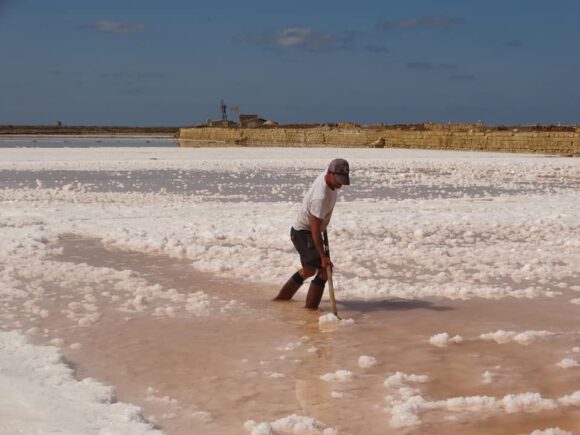White table salt, crunchy sea salt, pink rock salt, and even jet-black lava salt… the list of salts is long and growing. Thankfully, the New York Times has weighed in to light the way and help us choose the best salt out there. And guess what? Nothing is as good as sea salt. Yes, chemically speaking, salt is salt. But as food journalist Melissa Clark writes for the New York Times, sea salt is special. It’s more than just sodium chloride:
“Made by evaporating seawater, [sea salts] have a variety of trace minerals that add character, color and texture.”
That’s a far cry from industrial table salt, which the article describes as “the saline version of factory-sliced white bread”. Industrial salt is pure sodium chloride, gussied up with iodine, chemical stabilizers, and anti-caking agents. And that includes kosher salt, too.
“Like table salt, most kosher salt is industrially produced. It isn’t iodized, but might contain anticaking agents, which will be listed on the label.”
This is all old news to the readers of Marcella Hazan. Marcella has always had a strong opinion on table salt vs sea salt. She once said, a pack of table salt in her hand: “Never use this… Americans think this is salt but this is from some chemistry laboratory. It only adds sourness. It adds no flavor.” Melissa agrees:
“Table salt dissolves quickly when sprinkled on food or during cooking, and can taste harsh and slightly metallic, as well as stridently salty.”
It’s no surprise that food seasoned, marinated, or cooked using sea salt simply tastes better. To use Melissa’s words, sea salt “makes food taste more deeply of itself”.
“Sea salt: since it doesn’t usually contain iodine, it can have a cleaner flavor than table salt.”
Like any agricultural product, sea salt brings so much more to the table than anything produced in a lab. Taste and texture are a result of its terroir and production method. Melissa reports:
“Until its mass production in the early 20th century, salt was necessarily expressive of the geography and climate where it was produced. The mineral content of the salt, evaporation or mining techniques used to harvest it, and local traditions produced wildly different results.”
Sea Salt from Trapani
In Italy, there’s no salt other than sea salt. Traditionally, Italians cook with Mediterranean salt. At Gustiamo, that’s Salt from the Gucciardo family in Trapani, Sicily. The northwestern tip of Sicily has been an area of salt production since at least Roman times, yielding flavorful salt that’s naturally rich in iodine, fluorine, magnesium, and potassium. Not to mention the salt flats themselves are protected by the World Wide Fund for Nature. Plus, they’re home to thousands of migratory birds. It’s the salt of choice for chefs including Samin Nosrat, Stanley Tucci, Mark Bittman, and of course Marcella Hazan, to name a few.

The Gucciardo family offers three different grades of salt. Coarse sea salt, is perfect for salting your pasta water, dissolving into a brine, for preserving food or salting meats. Next, there’s fine sea salt, which you can use interchangeably with table salt. It’s what we use in baking and for seasoning vegetables. Finally, fiore di sale, or salt flower, is the flakey, crunchy finishing salt that adds salinity, minerality, and texture.
Read Melissa’s full piece “What’s With All the Different Salts? Here’s How to Use Them” here.
